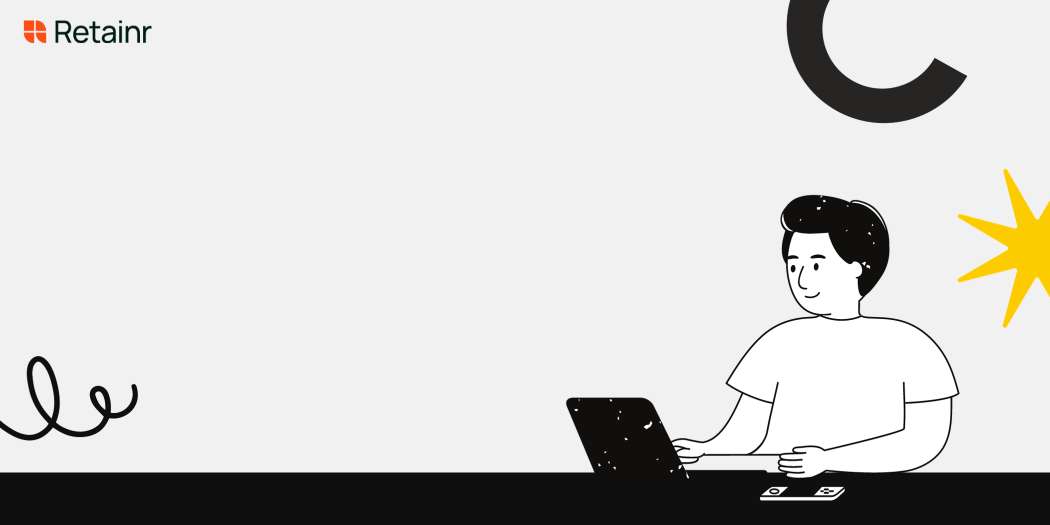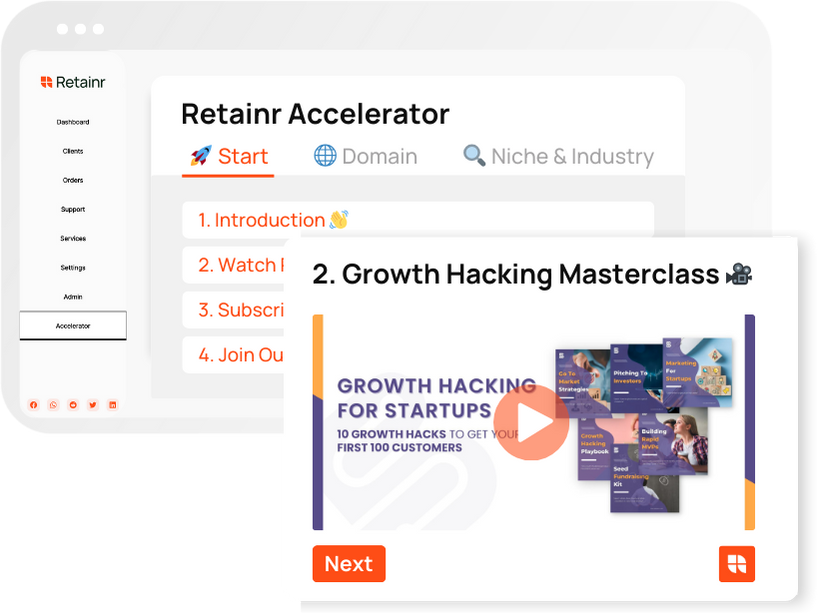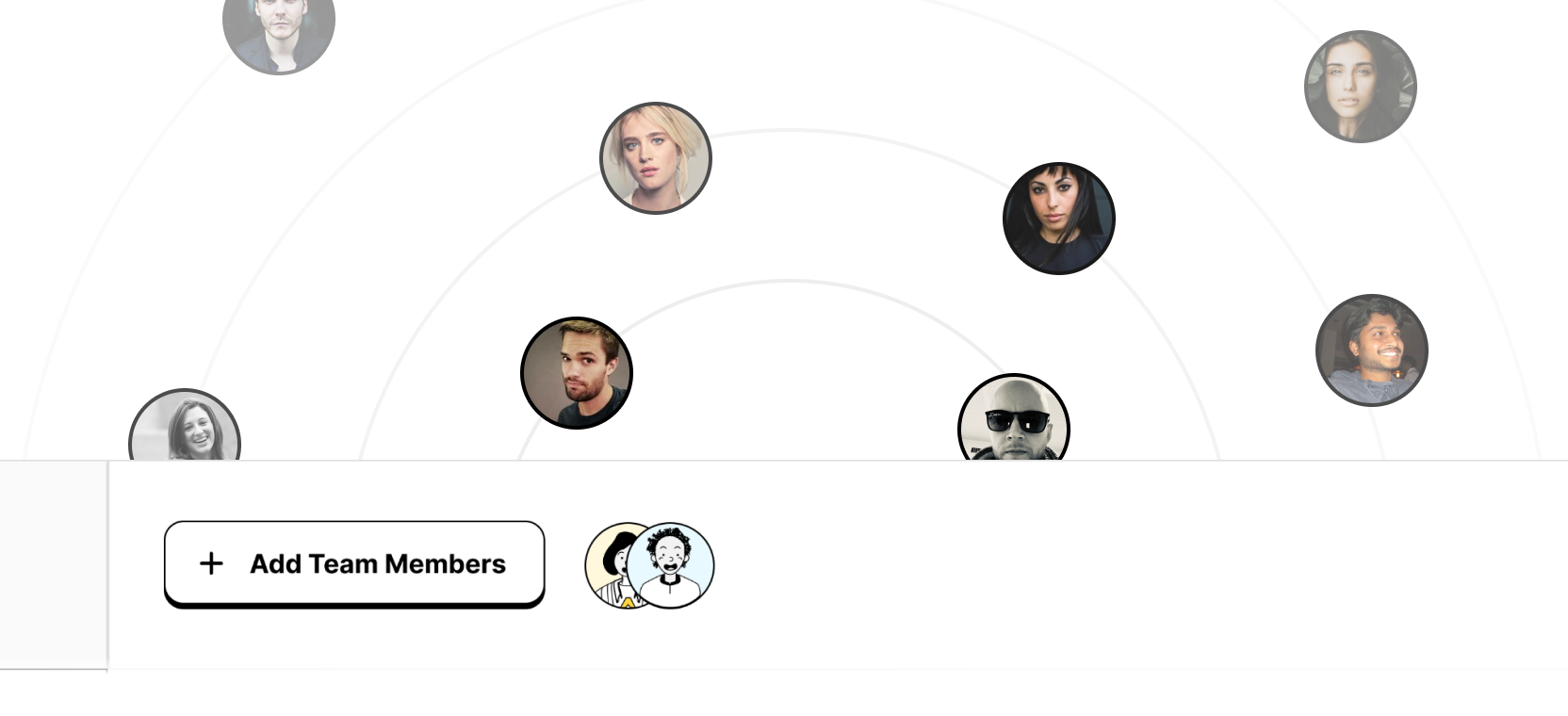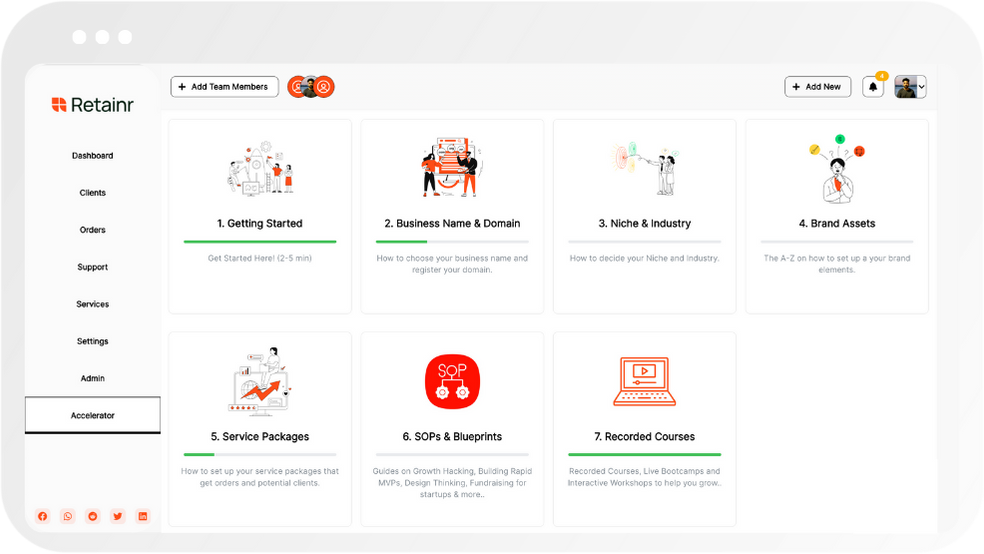
How to segment customers based on their level of engagement
Build with Retainr
Sell your products and services, manage clients, orders, payments, automate your client onboarding and management with your own branded web application.
Get Started1. How can customer segmentation be used to measure customer engagement levels?
What is Customer Segmentation and its Relation to Customer Engagement?
Customer segmentation refers to the process of dividing customers into groups based on similar characteristics, behaviors, or needs. The purpose is to better understand and target specific subsets of the clientele. One crucial parameter that can play a pivotal role in customer segmentation is the level of customer engagement. Customer Engagement measures the degree of customer interaction with a product, service, or brand, and can be determined through various metrics such as purchase frequency, interaction counts, or loyalty program participation.
Using Customer Segmentation for Measuring Engagement Levels
Varied engagement levels amongst the customer base can yield significant insights for the business. In order to do this:
- Customers can be divided into different segments based on their interaction patterns with the brand. For example, a group that frequently visits your website, another group that regularly responds to email campaigns, etc.
- Next, scoring models can be created that assign points to different types of engagement such as liking a social media post, subscribing to a newsletter, or purchasing a product.
- Then, calculate an overall engagement score for each customer segment based on these different point values. The resulting segments will represent various levels of customer engagement, thus providing a numerical means for comparison.
An Illustration of Customer Segmentation
A name, some key identifying factors, and an engagement score must be presumably given to each of the segments. Below is a tabular representation of what it could look like:
| Segment Name | Identifying Factor(s) | Engagement Score |
|---|---|---|
| Highly Engaged | Frequent website visits, Regular Purchases | 90-100 |
| Moderately Engaged | Occasional email responses, Social Media Interaction | 60-89 |
| Less Engaged | Minimal contact, Rare purchases | 30-59 |
| Disengaged | No contact or purchases | 0-29 |
2. What strategies can I use to segment customers based on their level of engagement?
Understanding Different Levels of Customer Engagement
The first strategy in segmenting customers based on their level of engagement is understanding customer behavior and interactions. This could be achieved by categorizing them into three major levels:
- Highly Engaged: These customers regularly interact with your brand by making purchases, leaving reviews, and recommending your products or services to others.
- Passively Engaged: These customers may occasionally make a purchase or interact with your business, but are not as active in terms of reviews or recommendations.
- Minimal Engagement: This group has limited interaction with your brand, and could potentially become inactive if not managed well.
Implementation of Customer Segmentation Strategies
Implementing customer segmentation strategies requires the use of smart tools and techniques. Some effective methods include:
- Customer Relationship Management (CRM) Systems: Tools like Salesforce or HubSpot can help track customer interactions and segregate them based on their engagement levels.
- Email Engagement Metrics: Email marketing platforms like MailChimp offer valuable insights like open rates, click-through rates and unsubscription rates which can help determine customer engagement.
- Customer Feedback Surveys: They can be beneficial in gauging the satisfaction and engagement levels of your customers.
Communicating with Different Segments
| Customer Segment | Communication Strategy |
|---|---|
| Highly Engaged | Provide first access to new products, run loyalty programs, and ask for referrals. |
| Passively Engaged | Encourage more interaction by offering discounts or running competitions. |
| Minimal Engagement | Re-engage with targeted marketing campaigns, offer help, and ask for feedback. |
Remember, the goal is not just to identify the segments, but to use this information to tailor your marketing and communication strategies effectively.
3. What are the benefits of segmenting customers based on their level of engagement?
Boosts Customer Retention
One of the main benefits that comes with segmenting customers based on their level of engagement is increasing customer retention. By dividing your customers into different levels of engagement, you can better understand their behaviour and thus create a more personalised and effective retention strategy. For example, for highly engaged customers, you may decide to offer loyalty programs to further incentivize them, while for less engaged customers, you might focus on re-engagement campaigns.
- Highly Engaged Customers: Implement loyalty programs;
- Moderately Engaged Customers: Send personalised offers and promotions;
- Lower Engaged Customers: Focus on re-engagement campaigns aiming to stimulate their interest in your products or services.
Increases Revenue
Another significant advantage of segmenting customers based on their level of engagement is the potential increase in revenue. Highly engaged customers are often more willing to purchase and may represent a more significant proportion of your total revenue. Hence, by identifying these customers, businesses can optimise their sales strategies to boost profitability.
| Customer Engagement Level | Potential Impact on Revenue |
|---|---|
| Highly engaged | High likelihood of purchase, hence generating more revenue; |
| Moderately or low engaged | Potential for re-engagement and conversion into active customers. |
Improves Business Strategy
Segmenting customers depending on their engagement level can guide the development and refinement of business and marketing strategies. It helps businesses understand where to invest their marketing efforts and resources for maximum impact. By focusing on the segments of highest engagement, businesses can nurture these customers to become brand advocates, who then contribute to organic growth by recommending the brand to others.
For example:
- Nurture high engagement segments into becoming brand advocates;
- Focus medium engagement segments into becoming more engaged;
- Create re-engagement strategies for low engagement segments.
4. Which methods are most accurate for segmenting customers based on engagement levels?
Methods for Segmentation Based on Engagement Levels
Understanding the engagement level of your customers can be achieved via various methods. These methods can help businesses send personalized messages that resonate better with their customers, hence improving conversion rates. Some of the most accurate methods include:
- Behavioral Segmentation: This method implies dividing your customers based on their behavior on your website or application. Factors such as purchase history, product usage, website interaction, and event tracking are taken into consideration.
- Email Engagement: You can segment customers based on their interaction with your emails. Metrics like open rates, click rates, and response rates are considered here.
- Customer Journey Analysis: The method involves tracking the journey of the customer right from the beginning. The objective is to understand how a visitor eventually becomes a loyal customer.
- Psychographic Segmentation: This approach considers the customers' lifestyle, interest, preference, values, and personality traits to segment them.
Comparison of Segmentation Methods
To give a clear understanding of these methods, here’s how they compare with respect to their complexities and efficiency:
| Method | Complexity | Efficiency |
|---|---|---|
| Behavioral Segmentation | High | Very High |
| Email Engagement | Medium | High |
| Customer Journey Analysis | Very High | Very High |
| Psychographic Segmentation | Very High | Medium |
Choosing the Right Segmentation Method
Choosing the right method for customer segmentation depends on various factors including the business model, resources available, complexity of customer behavior, and the volume of data. For instance, Behavioral Segmentation and Customer Journey Analysis might be suitable for businesses with high web traffic and complex customer behaviors. On the other hand, Email Engagement and Psychographic Segmentation would be more suitable for businesses with relatively simpler customer behavior or with less data to analyze.
5. What type of data do I need to collect for customer segmentation based on engagement levels?
Essential Data for Customer Segmentation Based on Engagement Levels
The first kind of data that needs to be collected when segmenting customers based on engagement levels are behavioral data. These spotlight how customers interact with your business. This includes:
- Website visits
- Email opens and clicks
- Usage of your product or service
- Purchase history
- Interaction with customer service and social media channels
Demographic and Psychographic Data for Segmentation
Next, demographic and psychographic data are crucial for a detailed view of the customer. Demographic data include age, gender, location, income, occupation and more. Psychographic data encompass values, attitudes, interests and personality traits, granting deeper insights beyond just who the audience is.
| Demographic Data | Psychographic Data |
|---|---|
| Age | Values |
| Gender | Interests |
| Location | Personality Traits |
| Income | Attitudes |
Customer Feedback and Transactional Data
Finally, an oft-overlooked but highly valuable source of data for engagement-based customer segmentation is customer feedback and transactional data. This data can provide insights into customer preferences, satisfaction levels, and likelihood to repeat a purchase. This includes:
- Reviews and ratings
- Survey responses
- Feedback on customer service interactions
- Purchase frequency and size
6. Can I use customer segmentation to predict future customer engagement levels?
Predicting Future Customer Engagement Levels
Customer segmentation can indeed be leveraged to predict future customer engagement levels. The key is to integrate historical data with segmentation to glean insights on potential behaviours. Segments that displayed high engagement levels in the past are likely to exhibit similar patterns in the future, and vice versa. This principle can be critical within strategic planning, enabling companies to cater their engagement campaigns accordingly.
- Satisfied Customers: This segment mainly represents recurring customers. They display high satisfaction levels and engagement rates with the brand.
- Loyal Customers: These are the customers who are less price-sensitive and more likely to interact more with the brand. They represent the highest future engagement prediction.
- At Risk: These are customers who once had high satisfaction levels, but their engagement has significantly dropped. Their future engagement can be uncertain and require further investigation.
- Lost Customers: They depict a low level of engagement, and therefore their future interaction tends to be minimal or none.
Below table provides an exemplary prediction of future customer engagement based on the mentioned segments. It indicates a potential level of engagement that a company might anticipate from different customer segments.
| Customer Segment | Future Engagement Level |
|---|---|
| Satisfied Customers | High |
| Loyal Customers | Very High |
| At Risk | Uncertain |
| Lost Customers | Low to None |
7. How can I improve my marketing strategy using customer segmentation based on engagement?
Improve Marketing Strategy through Engagement-Based Customer Segmentation
There are several strategic approaches to enhance your marketing strategy using customer segmentation based on engagement. The following steps offer a simplified guide:
- Identify Key Segments: By grouping customers into engagement levels such as high, moderate, and low, you can identify and prioritize segments that provide the most business value.
- Customize Communication: Tailor your marketing messages and channels according to each engagement level to encourage a deeper relationship with your brand.
- Offer Relevant Incentives: High engagement level customers may need loyalty rewards while customers with low engagement could be targeted with re-engagement offers.
Steps to Develop a Successful Marketing Campaign using Customer Engagement Segmentation
Organizing a successful marketing strategy using customer segmentation is a systematic process. It involves not only identifying the different segments but also formulating individual strategies for optimally engaging with each one. The following table illustrates this process:
| Steps | Description |
|---|---|
| 1.Identify | Recognize high, moderate, and low engagement segments. |
| 2.Analyze | Understand the key behavioral traits of each segment. |
| 3.Strategize | Build segment-specific marketing strategies and messages. |
| 4.Implement | Deploy the strategies across the most effective channels. |
| 5.Evaluate | Review the effectiveness of the strategy and make necessary adjustments. |
Refining and Optimizing the Process
Constant refinement and optimization of your marketing strategies based on customer engagement are crucial for sustained success. Here are some tips:
- Monitor Engagement Regularly: Engagement levels are not static and can change over time, hence, frequent monitoring and segment updating are vital.
- Test Pricing Strategies: Experiment with different pricing strategies for each segment to determine what drives the most engagement.
- Listen to Customers: Direct feedback from customers is invaluable in updating and optimizing engagement strategies.
8. Is there any specific software or tools that can assist in segmenting customers based on their level of engagement?
Digital Tools for Customer Segmentation
In the digital era, several software tools facilitate businesses to segment their customers based on their level of engagement. These software solutions present unique features that aid in the collection, processing, and analysis of customer data.
- HubSpot: An all-in-one inbound marketing software, HubSpot, offers excellent tools for customer segmentation, helping businesses improve their overall customer experience.
- Google Analytics: A widely used tool, Google Analytics, provides insights about the actions of visitors on your website and enables you to categorize them into various segments.
- MailChimp: Primarily an email marketing tool, MailChimp, contains features that allow businesses to create customer segments based on engagement.
An Overview of the Tools and its Key Features
Each software tool entails a unique insight into customer segmentation based on different metrics, including Engagement frequency, Length of engagement, and Nature of engagement. This aids businesses in strategically addressing customer expectations and creating personalized marketing campaigns.
| Software Tools | Key Features |
|---|---|
| HubSpot | Website analytics, Social media suite, CRM capabilities, Email automation |
| Google Analytics | Website visitor tracking, Traffic source identification, User behavior analysis, Audience segmentation |
| MailChimp | Email marketing, A/B testing, Reporting and analytics, Contact level targeting |
Effectiveness of the Tools in Customer Segmentation
These software tools, with their advanced features, transform the intricate process of customer segmentation into a much more manageable task. They provide businesses with valuable metrics and insights that allow them to understand customer behavior better, strategize marketing campaigns, and ultimately, improve customer satisfaction.
- HubSpot: With its comprehensive sales platform and customer-tracking history, businesses can easily monitor their customer’s journey, helping them in segmenting customers effectively based on their interaction.
- Google Analytics: This tool’s in-depth analysis of user behavior helps identify active users, new users, and dormant users. Such segmentation enables businesses to devise personalized engagement strategies for each customer group.
- MailChimp: MailChimp’s reporting feature gives a clear picture of customer’s email activity and engagement, assisting businesses in creating more effective and engaging email campaigns.
9. Once customers are segmented by engagement level, how should this information be used?
Utilization of Customer Segmentation Information
After successful segmentation of customers by level of engagement, effective utilization of this information plays a critical role in the decision-making process for your marketing strategies. This could encompass the development of tailored marketing campaigns, improved customer relationships, and ultimately, a boost in sales. Each customer segment will require a different approach because their level of engagement defines their needs, interests, and habits. Therefore, customizing marketing actions for each segment is logical and more likely to drive positive results.
The following are some ways to use this information:
- Personalized Marketing: Send targeted messages to your customers.A higher-engaged customer may want more in-depth information about your products or services, while a less-engaged customer may need more general information or promotional incentives.
- Identify Opportunities: Identify upselling or cross-selling opportunities. Customers with a higher engagement level may be more open to additional purchasing opportunities.
- Customer Retention: Create retention programs for highly engaged customers, ensuring their loyalty and increasing their lifetime value. Less engaged customers can be targeted with re-engagement campaigns.
- Product Development: Use customer engagement levels to guide product improvement or development. Highly engaged customers are more likely to provide valuable feedback.
Here is an example of how customer segmentation by level of engagement can be mapped:
| Segment | Frequency of Purchase | Open Rate of Emails | Social Media Engagement | Website Visits |
|---|---|---|---|---|
| Highly Engaged | Weekly | 75% | 20 likes/comment per post | 10 times per week |
| Engaged | Monthly | 50% | 5 likes/comment per post | 3 times per week |
| Less Engaged | Quarterly | 20% | 1 like/comment per post | 1 time per month |
10. How frequently should engagement-based customer segmentation be updated or revised?
The Frequency of Updating Engagement-Based Customer Segmentation
The process of reviewing and modifying customer segmentation needs to be a regular activity as customer behavior can change over time due to changing economic conditions, shifting market trends or even personal reasons. However, the frequency of updating such segmentation varies based on different factors.
- Industry Pace: B2B companies operating in dynamic industries often face quick shifts in customer behavior and preference. Therefore, they may need to revise their engagement-based segmentation every quarter.
- Customer lifecycle: For business models with short customer lifecycle, revisions should be done monthly, while businesses with longer lifecycles can revise bi-annually or annually.
- Data Volume: For businesses with a large clientele, the segmentation can be revised more frequently as more data will be generated, allowing for more accurate analysis.
Striking the balance between overwhelming your team with constant revisions and getting the most updated and pertinent insights is crucial. A suitable medium could be running a big annual review and smaller monthly or quarterly checks depending on your business model.
| Industry | Frequency |
|---|---|
| Fast-Paced B2B | Quarterly |
| Short lifecycle B2C | Monthly |
| Long lifecycle B2C | Bi-Annually/Annually |
It's important to remember that frequent resegmentation can lead to anomalies appearing as trends, whereas infrequent resegmentation can miss out on important changes. Choosing an appropriate frequency depends on your business context and your team's ability to efficiently process and make use of the updated segmentation data.
Conclusion
Customer Segmentation: Key to Enhanced Engagement
Understanding your customers is essential for every successful business, allowing for effective targeting strategies and a more personalised customer experience. One effective way to gain these insights is through customer segmentation based on their level of engagement.
Collect And Analyse Customer Data
Segmenting customers effectively begins with data collection. Understanding customer behaviour, purchase history, and interactions with your communication touchpoints aids in categorizing them according to their engagement levels.
Define The Types Of Engagement Levels
Additionally, it's essential to define what constitutes different engagement levels. Typically, businesses classify customers into highly engaged, moderately engaged, and low engagement. It is then possible to formulate strategies to increase customer activity and encourage repeated business.
Monitor and Adapt
Customer segmentation is an ongoing process. Keeping an eye on changes in your customer engagement is essential, enabling agile adaptation to their needs and behaviors and increasing customer retention.
Enter a Solution: Retainr.io
However, this task can be challenging without having a proper system in place. Fortunately, businesses have the benefit of using Retainr.io. This whitelabel software allows you to sell, manage clients, orders, and payments with your own branded app.
With Retainr.io, you can easily monitor each customer's level of interaction with your business, identify trends, and analyze customer behavior. This will not only aid in the process of customer segmentation but also in right-targeting your customers.
Keep your customers engaged and your business growing with Retainr.io. To get started, visit www.retainr.io today.
Boost Your Agency Growth
with Retainr Accelerator
Uncover secrets, strategies, and exclusive blueprints to take your agency's growth to the next level — from marketing insights to effective presentations and leveraging technology.

SOPs, Cheatsheets & Blueprints
Leverage 50+ SOPs (valued over $10K) offering practical guides, scripts, tools, hacks, templates, and cheat sheets to fast-track your startup's growth.
Connect with fellow entrepreneurs, share experiences, and get expert insights within our exclusive Facebook community.
.jpg)

Join a thriving community of growth hackers. Network, collaborate, and learn from like-minded entrepreneurs on a lifelong journey to success.

Gain expertise with recorded Courses, Live Bootcamps and interactive Workshops on topics like growth hacking, copywriting, no-code funnel building, performance marketing and more, taught by seasoned coaches & industry experts.

.jpg)

.jpeg)


